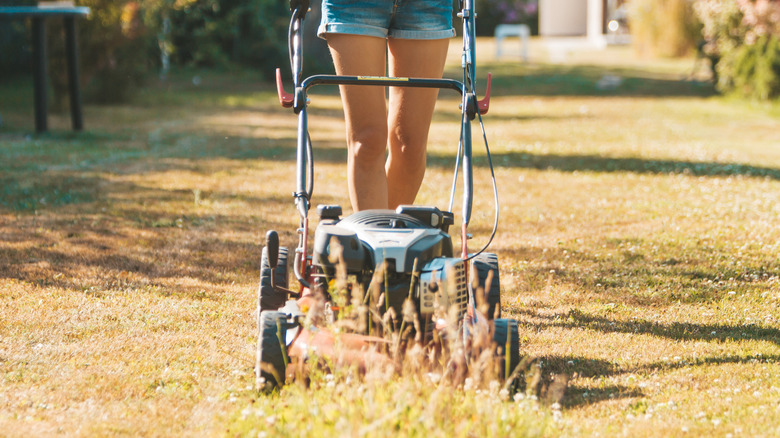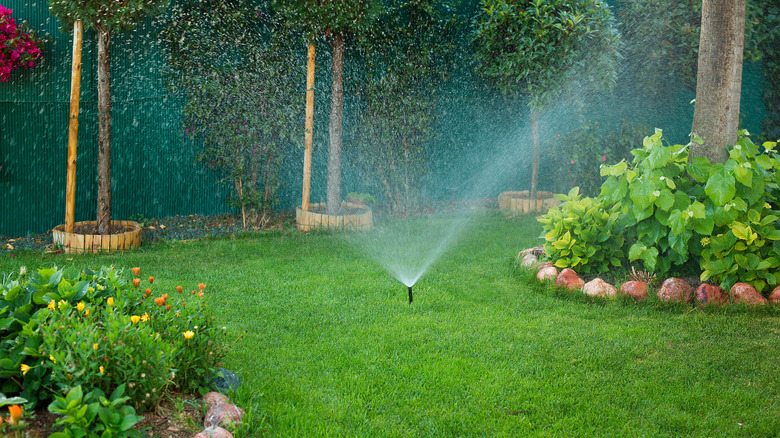How To Help Your Lawn Recover From A Drought
There's almost nothing more deflating than spending hours upon hours working in your yard to make it look like the prettiest one on the block, only to have a drought destroy the blood, sweat, and tears you put into it. Just like almost everything in the world, grass needs water, and when it hasn't seen a good shower in weeks, it takes a toll on your lawn, turning the ugliest shade of brown. Even when the rain comes back, your lawn needs a minute to recover, which almost destroys your plan to win that Lawn of the Year contest. Thankfully, with the right care, patience, and timing, your lawn can bounce back greener than ever. The trick is to help your lawn recover slowly, giving it time to wake up and get growing again.
While knowing how to treat your lawn in the middle of a drought is crucial, the great thing about grass is that it's relatively resilient. When your lawn hasn't had water for an extended period of time, it will become dormant to save energy until the environment improves (especially warm-season grass). Those brittle brown blades might look discouraging, but as long as their roots are still alive, there's a good chance your lawn can be revived.
If you don't want to be overly dramatic about your brown, crunchy lawn and opt for full-blown xeriscape, these easy tips can help resurrect your lawn and possibly even make it stronger.
Tips for bringing your lawn back from a drought
The first step is to confirm if you're dealing with dormant or dead grass with a tug test. Grass that offers some resistance can likely be revived, but if it pulls out of the ground easily, it is dead, and you'll need to reseed that area. Next, give your lawn a deep soaking with copious amounts of water. You'll water less frequently, but for longer periods and in the early mornings before 10 a.m. to prevent evaporation. Aim for roughly 1 to 1½ inches of water per week.
The compacted, hardened soil needs a little TLC, too. Aerating the soil allows moisture and air to filter into the roots. It's important to know the right way to aerate your lawn, without creating holes in the soil and further stressing your fragile lawn. Timing is important, so wait to aerate until the grass is beginning to grow back and always water afterwards.
Though it might sound counterproductive, you should mow your lawn — but less frequently – and only once your grass shows signs of recovery. Make sure you have the best lawn mower for your yard and that its blades are sharp. Leave the grass about ½ to 1 inch higher than normal to allow the roots to flourish and provide shade for the parched ground. This is the best time to put out a "stay off the grass" sign, as you'll want to limit foot traffic on your lawn because it squishes the new growth and stresses the damaged grass. When you witness your efforts paying off, adjust the watering schedule to avoid overwatering.

